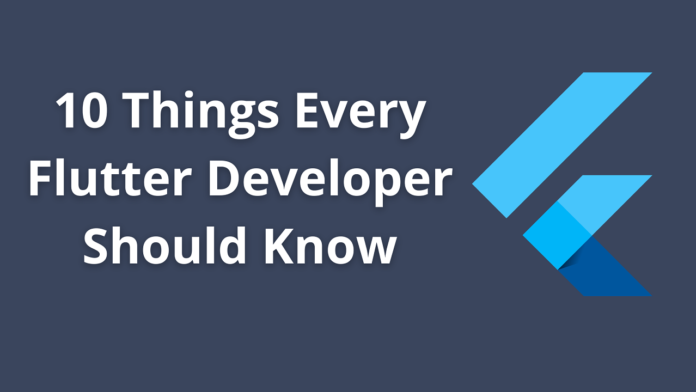Flutter is an increasingly popular development framework for mobile app, web and desktop development. With its clear syntax, a wide range of features and open-source integration capabilities, Flutter can be a great tool for developers of all skill levels. In this blog post, we’ll explore 10 things every Flutter app developer should know. We’ll cover everything from the basics of the framework to more advanced tips and tricks that can help you get the most out of your coding experience. Read on to learn more about what makes Flutter so great and how you can make the most of it!
Table of Contents
What is Flutter?
Flutter is an open-source mobile app development framework created by Google. It is used to develop applications for Android and iOS. Flutter is based on the Dart programming language and uses the Skia graphics engine.
Flutter was first announced at the Google I/O conference in 2017, and its first stable release was on December 4, 2018.
The Pros and Cons of Flutter
When it comes to choosing a cross-platform development tool, there are many factors to consider. One of the newer options on the market is Flutter, which has quickly become popular among developers. While it has its pros and cons, it’s important to understand both before making a decision for your next project.
PROS Of FLUTTER
Flutter is fast. Because it compiles directly to native code, it doesn’t need the bridge that other tools like Cordova require. This means that development is quick and there’s no need for extra time spent on optimizing code for each platform.
There’s also less testing required with Flutter. With other tools, you often have to test on multiple devices and emulators to ensure compatibility. But because Flutter runs on both Android and iOS, you can test on just one device and be confident that your app will look and feel great on both platforms.
Another big pro is that Flutter gives you complete control over every pixel on the screen. You can create custom UIs that are truly unique to your app, without having to worry about whether or not they’ll translate well to other platforms.
CONS
Of course, no tool is perfect and Flutter does have its drawbacks. One of the biggest is that it’s still fairly new and thus has a smaller community than something like React Native. This can make finding answers to problems more difficult
10 Things Every Flutter App Developer Should Know
- The Dart Language
- The Flutter Framework
- The Widgets
- The Material Design
- The Cupertino Design
- animation and graphics
- Use Packages
- Using Flutter Dev tools
- Code Snippet Shortcuts
- State Management Architecture
How to Get Started with Flutter
Assuming you are already familiar with Dart, getting started with Flutter is easy. All you need is the Flutter SDK and an IDE or text editor of your choice. For this article, we will be using Visual Studio Code.
Once you have the Flutter SDK and VSCode installed, open VSCode and click on the Extensions icon on the left hand side (it looks like a square with an “x” in the middle). In the search bar at the top of the Extensions window, type in “flutter” and hit enter. The first result should be the extension we are looking for called “Flutter”. Click on Install and then Reload when prompted.
Now that we have the necessary tools installed, let’s create our first Flutter project! Go ahead and open up a new terminal window inside of VSCode. We are going to use the flutter command line tool to create a new project called myapp . Type out flutter create myapp and hit enter. Once that process has completed, open up myapp in VSCode by typing code myapp into your terminal window.
The main file that we will be working with is located in myapp/lib/main.dart . This is where we will write our Dart code to build our app’s UI. Let’s go ahead and replace all of the boilerplate code in main.dart with the following:
import ‘package:flutter/material
Conclusion
As the demand for cross-platform mobile apps continues to grow, more and more businesses are turning to Flutter app development. Flutter is an open-source framework created by Google that allows developers to create high-quality native apps for both iOS and Android. If you’re looking to hire Flutter developer, there are a few things you should keep in mind.
First, because Flutter is still relatively new, there aren’t as many developers with experience in the framework. This means that you’ll likely have to pay a bit more for a Flutter developer than you would for someone with experience in a more established framework.
Second, because Flutter is created by Google, it’s important to make sure that the developer you’re hiring is familiar with Google’s guidelines and best practices. This will help ensure that your app meets all of the necessary requirements and that it functions properly on both iOS and Android devices. Finally, be sure to ask for examples of previous work before hiring a Flutter developer. This will give you a good idea of their experience level and will allow you to see if their style is a good fit for your project.



























